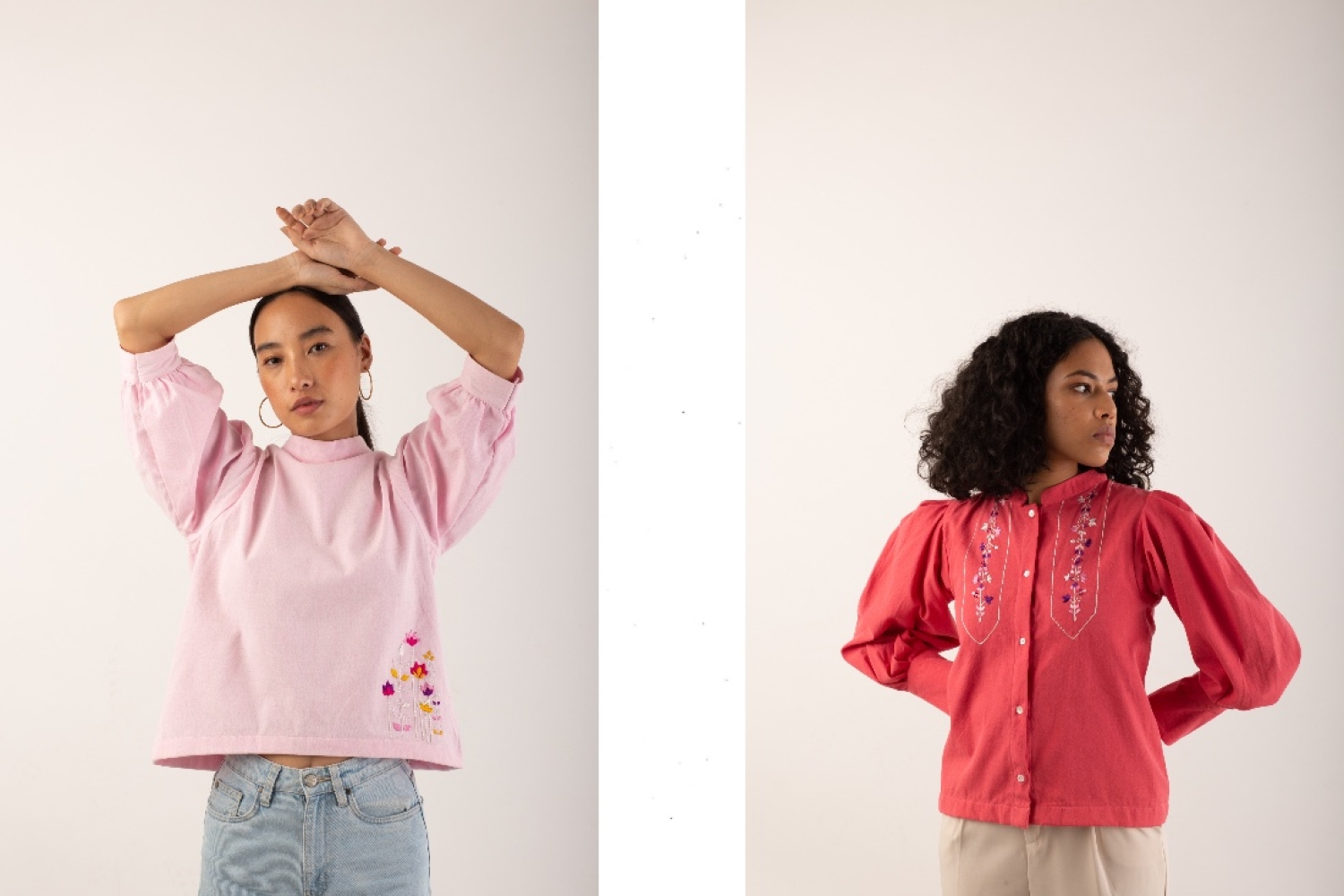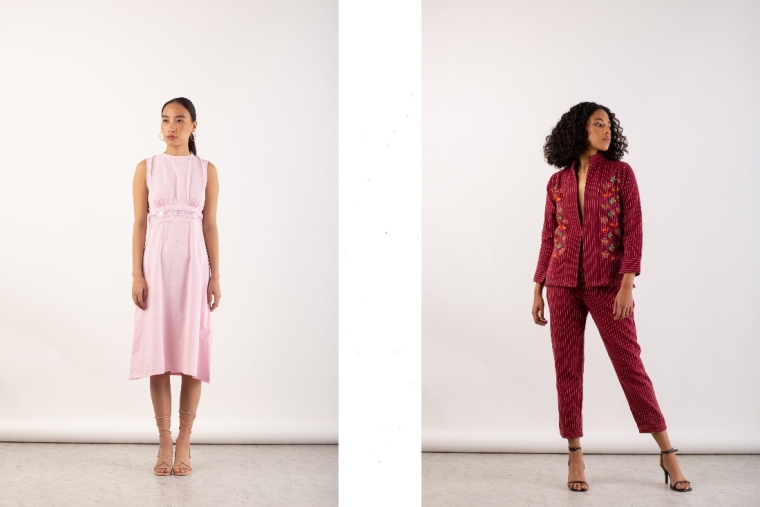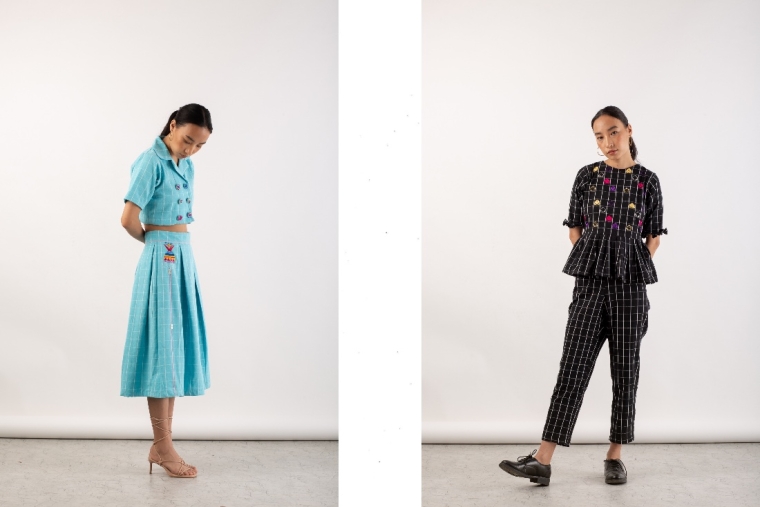

Founder of the label Aab, Shreya Mehra, was observant and creative from the get go. She studied media and communications, and thoroughly enjoyed the entire process that taught her to articulate and convey a plethora of ideas. As someone who never studied design formally, she found her way into the field through her skill and drive. Shreya keenly observed the gap for hand-crafted and well-designed Phulkari in the market, and hence, Aab came into existence. Ever since, there has been no looking back. She tells us more about the label and what it stands for below.
What does Aab stand for?
Literally, Aab means water in Punjabi and Persian. Thus, Punj + aab, the land of five rivers. And in essence, the brand Aab stands for the cultural legacies and their revival in contemporary times. Aab is grounded in the philosophy that when culture and crafts fade, so does a part of us that relates to it. And thus, the idea to revive the fading craft of hand-crafted Phulkari was born.

Take us through your creative process.
Creative processes are in general chaotic. At Aab, we do take the liberty to be creative with our motifs and silhouettes. However, often, multiple teams come together to strike a balance and create a product that is innovative as well as appealing. The process is long, and often goes through multiple stages. Starting from ideation, research, streamlining the ideas, and finally, execution.
Why Phulkari for revival?
Growing up in Amritsar, I was always aware of how the antique Phulkaris looked, but could rarely find those in the bazaars popular for Phulkari. The lack of design and innovation in easily available, machine produced Phulkaris would often disappoint me. And it was always the beauty of the traditional hand-crafted pieces that captured my eye. A lack of availability for hand-crafted Phulkaris and my love for art and culture were a natural pull for Phulkari revival.

How do you balance the aesthetics to make sure to cater to a modern audience?
After much thought and research, I realised the only way to revive Phulkari was to make it contemporary. Thus, to balance the aesthetics and cater to the modern audience, we adapted a fusion approach. We develop new motifs and designs in-house which appeal to the modern audience, however we don't change the technique. The form of the garment has changed from dupattas to contemporary silhouettes, however the raw materials remain the same. We make sure that every piece is hand-embroidered with patt silk threads and uses only handwoven fabrics — just like the antique Phulkaris! Hence, its is a balance of classic and modern!
Finally, what should the fashion of now look like?
Fashion is an expression of one's personality. It is more than a fad. However, we often tend to confuse fashion with trends. While trends are crucial, fashion can never be limited to what is transient and temporary. One should be able to connect emotionally and feel confident while following fads, rather than blindly wearing them. And often, it is the classics, and timeless styles, that ignite the most emotions and resonate deep with us. Fashion is a very personal process, despite being generic. As we evolve, so does our fashion statement!
Text Unnati Saini
Date 27-07-2022